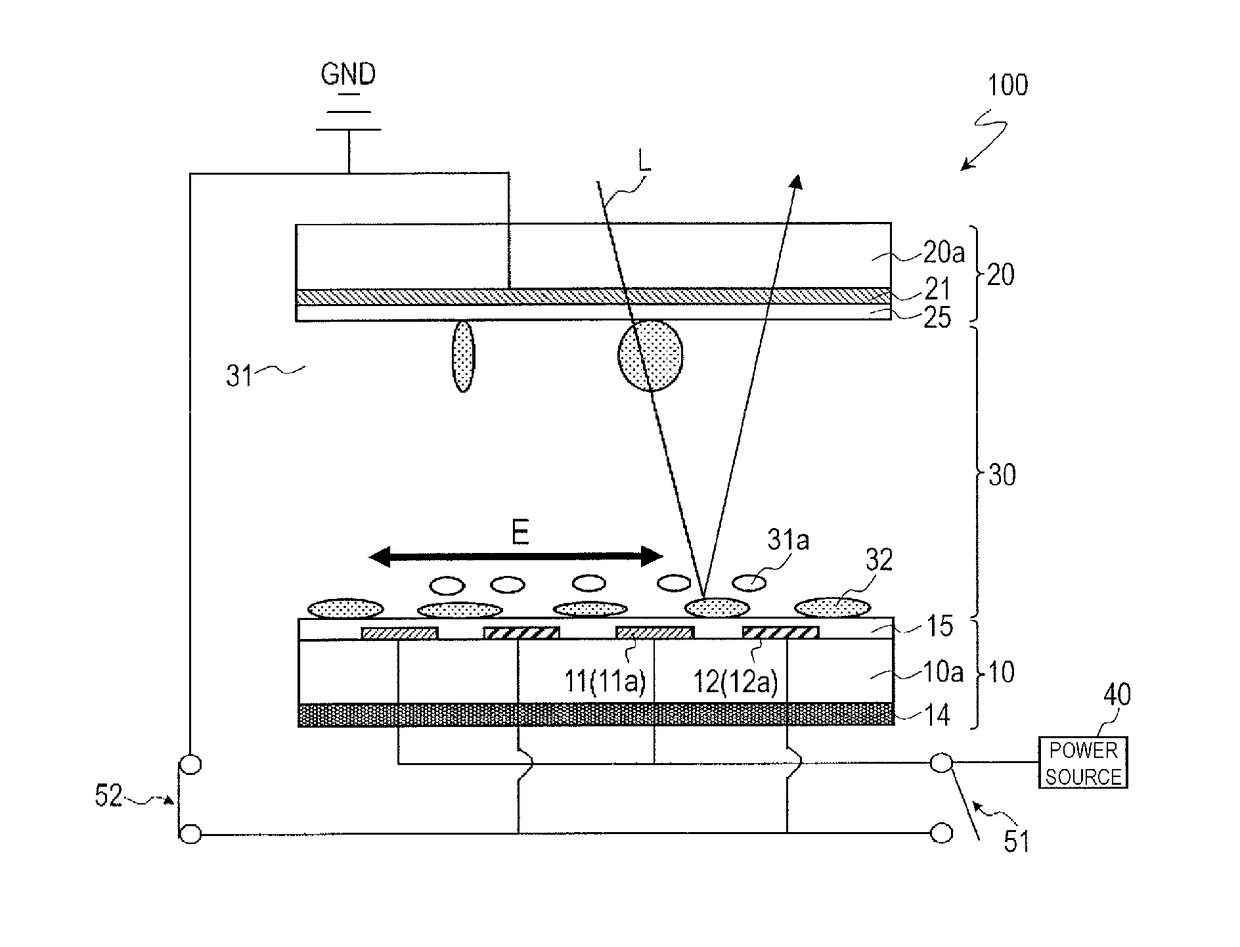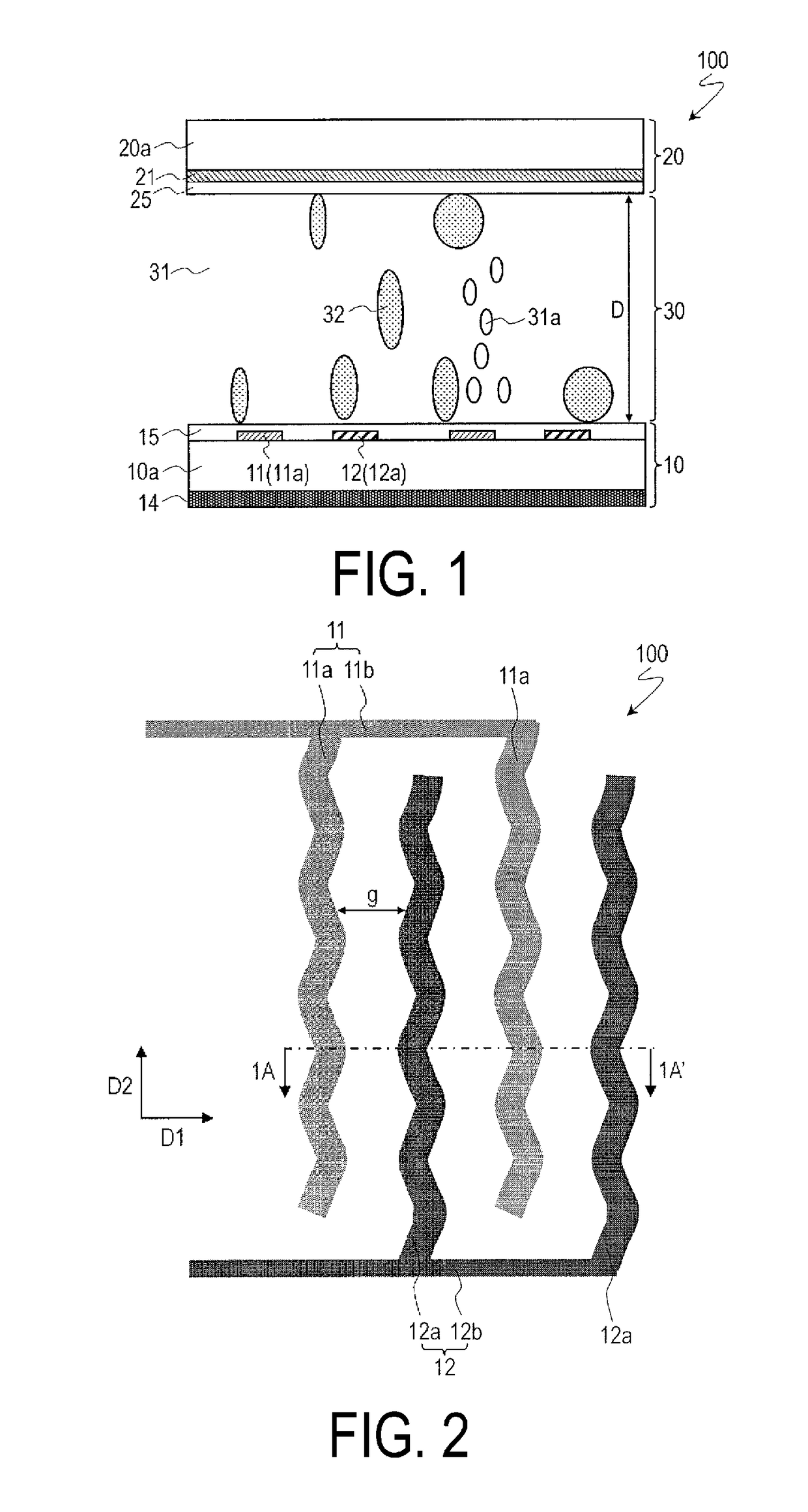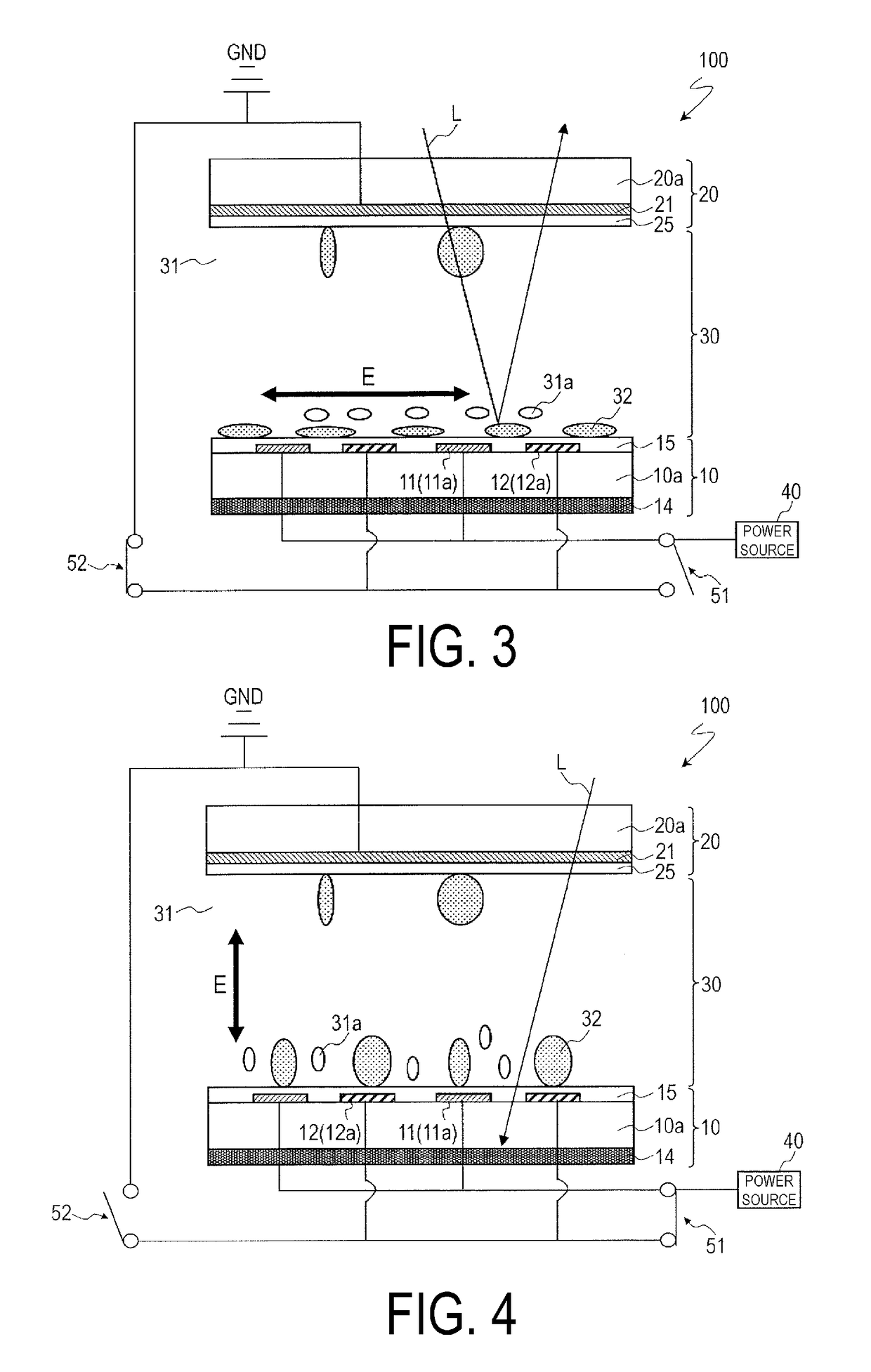Optical device
a technology of optical devices and polarizing plates, applied in static indicating devices, non-linear optics, instruments, etc., can solve the problems of low light utilization efficiency and more than half of the light used for display, and achieve the effect of reducing the proportion of regions
- Summary
- Abstract
- Description
- Claims
- Application Information
AI Technical Summary
Benefits of technology
Problems solved by technology
Method used
Image
Examples
first embodiment
[0110]FIG. 1 and FIG. 2 illustrate a display device (optical device) 100 according to the present embodiment. FIG. 1 and FIG. 2 are a cross-sectional view and a plan view schematically illustrating the display device 100, respectively. FIG. 1 is a cross-sectional view taken along the line 1A-1A′ in FIG. 2.
[0111]The display device 100 is a reflective display device capable of performing display in a reflection mode using externally incident light (ambient light). The display device 100 includes a plurality of pixels arranged in a matrix.
[0112]As illustrated in FIG. 1, the display device 100 may include a first substrate 10 and a second substrate 20 provided opposite to each other, and an optical layer (display medium layer) 30 provided between the first substrate 10 and the second substrate 20. Hereinafter, the first substrate 10 relatively located on the rear side of the first substrate 10 and the second substrate 20 may be referred to as a “rear side substrate”, and the second subs...
second embodiment
[0173]FIG. 18 and FIG. 19 illustrate a display device (optical device) 200 of the present embodiment. FIG. 18 and FIG. 19 are a cross-sectional view and a plan view schematically illustrating the display device 200, respectively. Hereinafter, the description will be focused on the differences between the display device 200 according to the present embodiment and the display device 100 of the first embodiment.
[0174]The display device 200 according to the present embodiment differs from the display device 100 of Example 1 in that the first substrate 10 further includes a third electrode 13 provided below the first electrode 11 and the second electrode 12 with an insulating layer 16 interposed therebetween.
[0175]The third electrode 13 may be what is referred to as a solid electrode in which no slit or cutout portion is formed. The third electrode 13 may be formed of a transparent conductive material such as ITO or IZO. The thickness of the third electrode 13 may, for example, be 100 nm...
third embodiment
[0213]FIG. 30 and FIG. 31 illustrate a display device (optical device) 300 according to the present embodiment. FIG. 30 and FIG. 31 are a cross-sectional view and a plan view schematically illustrating the display device 300, respectively. Hereinafter, the description will be focused on the differences between the display device 300 according to the present embodiment and the display device 100 of the first embodiment.
[0214]In the display device 300 of the present embodiment, each of the plurality of comb teeth portions 11a of the first electrode 11 is linear, and each of the plurality of comb teeth portions 12a of the second electrode 12 is also linear. Also in the display device 300 of the present embodiment, the first substrate 10 may include a plurality of dielectric layers 17 provided so as to overlap with the outer edge of each comb tooth portion of the first electrode 11 and the outer edge of each comb tooth portion 12a of the second electrode 12. As the material for the plur...
PUM
| Property | Measurement | Unit |
|---|---|---|
| thicknesses | aaaaa | aaaaa |
| dielectric constant | aaaaa | aaaaa |
| diameter | aaaaa | aaaaa |
Abstract
Description
Claims
Application Information
 Login to View More
Login to View More - R&D
- Intellectual Property
- Life Sciences
- Materials
- Tech Scout
- Unparalleled Data Quality
- Higher Quality Content
- 60% Fewer Hallucinations
Browse by: Latest US Patents, China's latest patents, Technical Efficacy Thesaurus, Application Domain, Technology Topic, Popular Technical Reports.
© 2025 PatSnap. All rights reserved.Legal|Privacy policy|Modern Slavery Act Transparency Statement|Sitemap|About US| Contact US: help@patsnap.com



